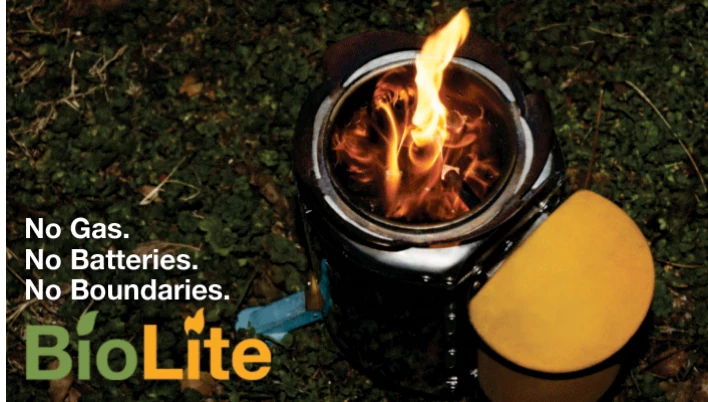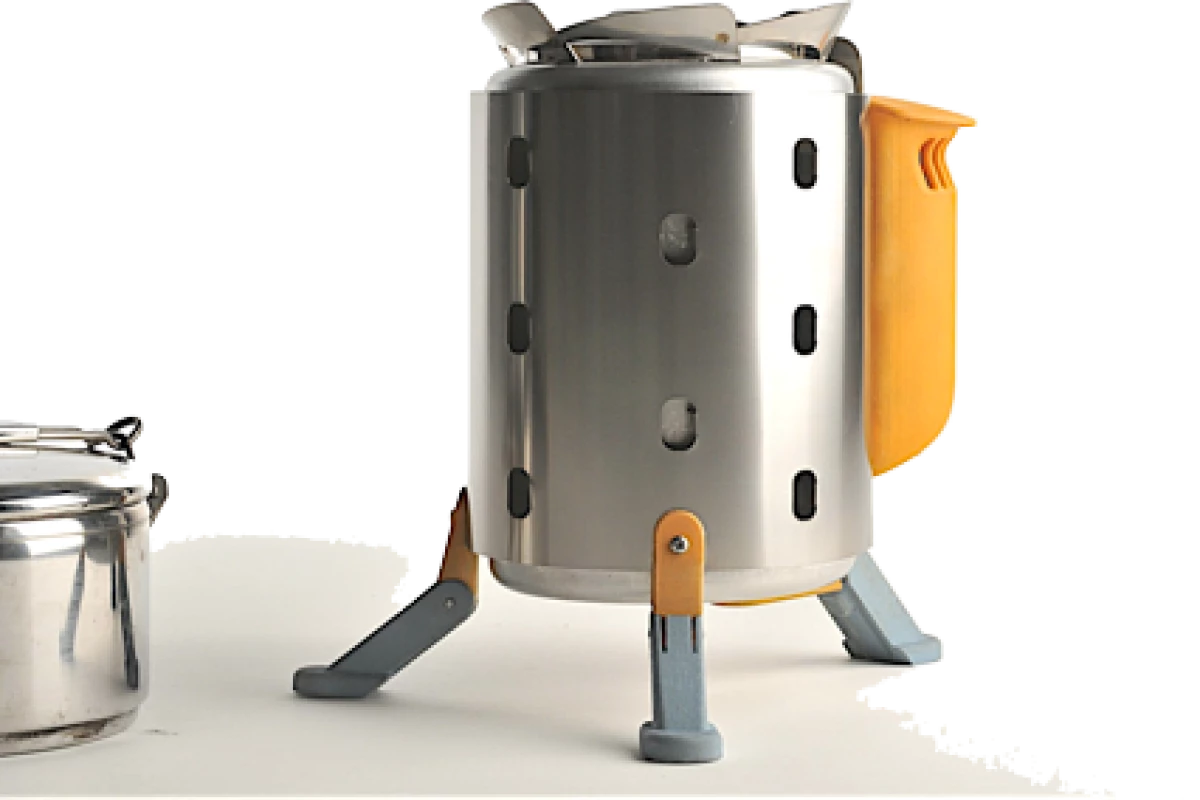Consider the humble camping stove. It requires fuel - perhaps some unwieldy bottle that air carriers object strongly to. Maybe it needs batteries to run a fan, or billows out smoke so you smell like smoked sweatshirt for the rest of the trip. The solution might be the BioLite stove - it's a collapsible wood-burning cook stove that uses almost any forest-found fuel and converts its own heat energy into electricity to achieve efficient combustion with ultra-low emissions.
Fuel
Since the BioLite will burn almost any biomass fuel; from wood, pine cones, leaves, pellets, rice husks, even dung, it means fuel need not be carried, unlike bottles for petroleum or gas burners that cannot be carried on airplanes and must be sourced at destination.
The Principal
The stove itself operates by utilizing the "woodgas" principal, whereby the thin gas layer that burns around a solid fuel is separated and added to oxygen to burn more efficiently. The BioLite power pack captures wasted heat energy from the fire and converts it to electricity via a thermoelectric generator (TEG). This is then used to power a fan which pushes oxygen into the chamber creating hotter, cleaner more efficient combustion.

Assembly
The power pack fits neatly inside the combustion chamber, and clips to the exterior when removed to create a cook stove that is 7.5 inches tall, 4.75 inches in diameter, and weighs 1lb 10 ounces. The fan should be switched on and the vent open to allow oxygen flow before the fire is started using whatever forest fuels are available. Dry leaves or starter material are placed near the heat pipe within the chamber which will collect heat and convert it to electricity to drive the fan. The oxygen added from the chamber pores gives a clean, hot flame with no smoke. The stove takes only a couple of minutes to get going and can boil one liter of water in four minutes, as rapidly as a jet boil or reactor flame. Despite this the stove exterior remains cool to the touch and well-insulated; it's therefore easy to add more fuel simply by lifting the pan and popping more in. The heat control switch lowers the speed of the fan, and this, or less fuel, will create a smaller flame for simmering.
When you wish to extinguish it you can either allow the fan to keep adding oxygen till all the fuel runs out, or by swilling the coals in any remaining cooking water and pouring into a small hole nearby. The fan will keep running to cool the stove and it takes only 5 minutes before you can pack the stove and get on the road again.
Benefits
There are no batteries, and no moving parts to break and since the TEG is made from solid state semiconductor elements, it should be good for more than twenty years of service. The addition of oxygen means wood consumption is reduced by half, smoke emissions are reduced by 95%, and black carbon is all but eliminated. As there is no dependency on fuel or power it is a great emergency preparedness tool, but could also benefit a diverse array of people living without electricity - from hikers and hunters, to backpackers and festival-goers, and people living in the developing world.
The future of BioLite
The designers behind BioLite have a patent pending and hope it will be available to purchase at an affordable price soon. BioLite have pledged to commit a portion of sales from the camp stoves to support clean wood burning projects in the developing world. PBS covered an India stove trial initiative that aims to cut the air pollution from traditional wood and dung stoves by distributing these cook stoves and monitoring the drop in air pollution and respiratory irritation in the next two years. Additionally the company is working with the Aprovecho Research Center, to develop the world’s first forced air rocket stove.BioLite won top prize in the Vodafone Innovation Project recently, as well as first prize for the design with the lowest emissions at the ETHOS conference, a gathering of government, NGO, manufacturer and inventors to discuss the design of wood stoves for the developing world market, where it was also the only entry requiring no additional electrical resource. Additionally it was presented at the United Nations during a meeting of the World Intellectual Property Organization (WIPO).
You can watch a video demo at the BioLite site.





